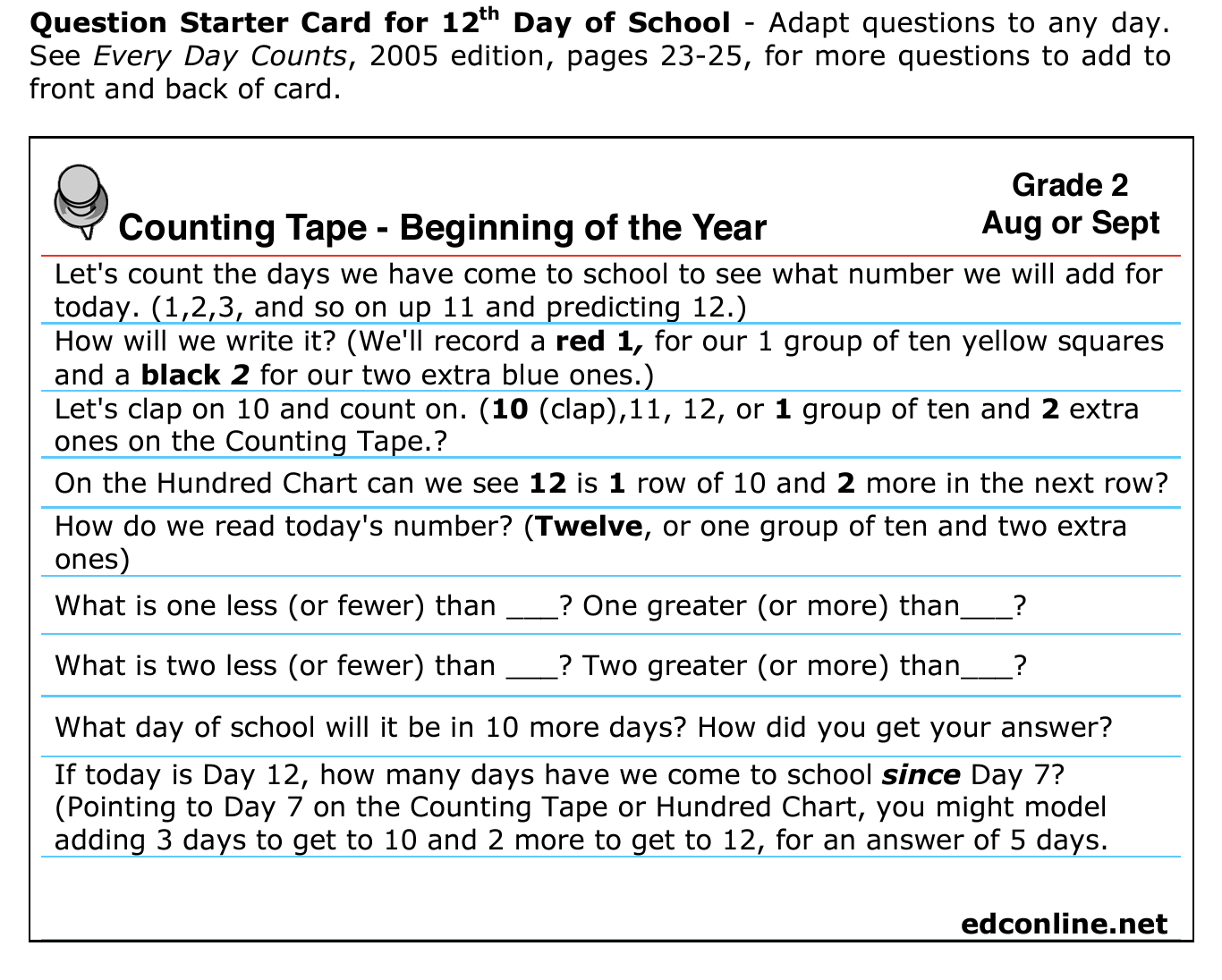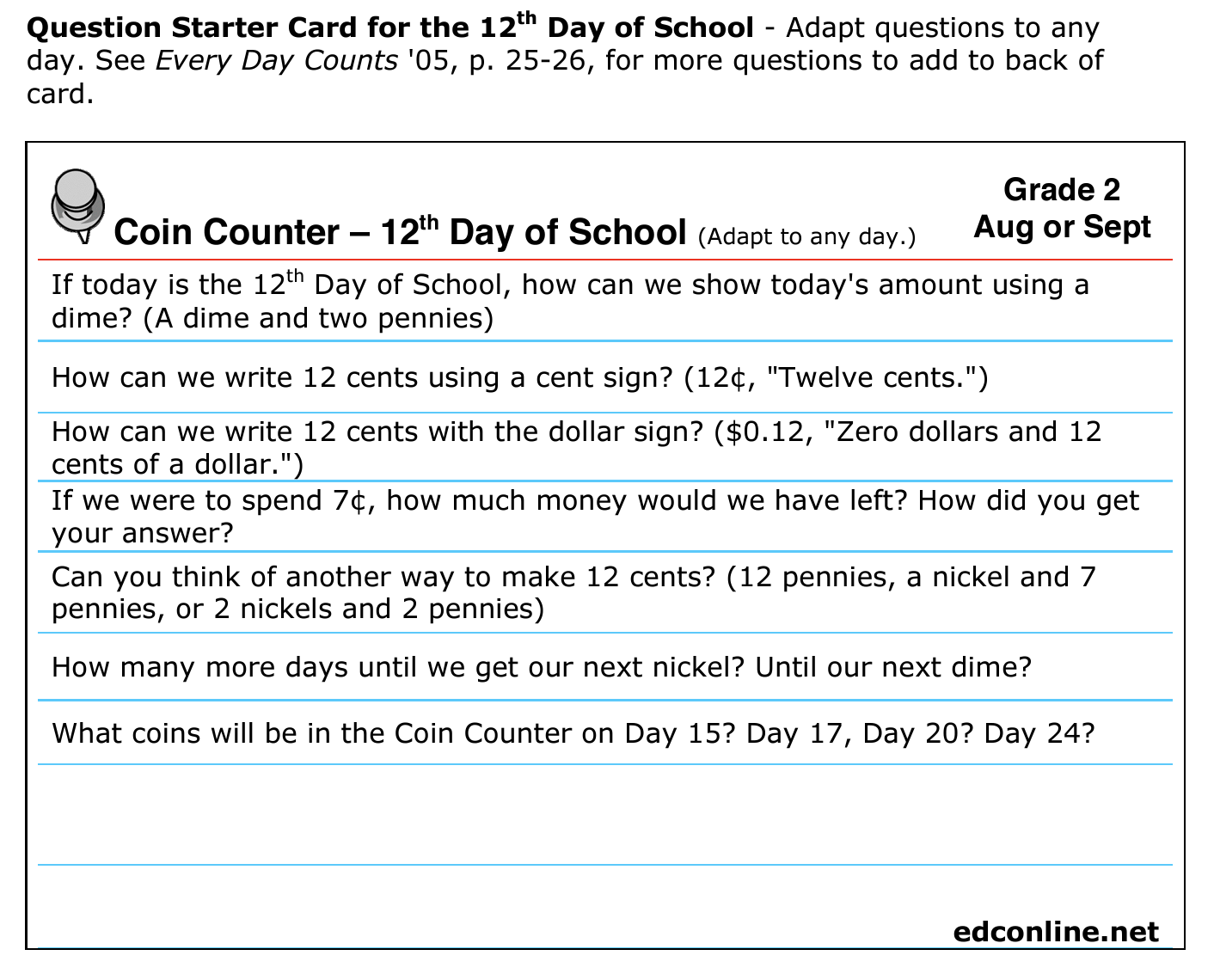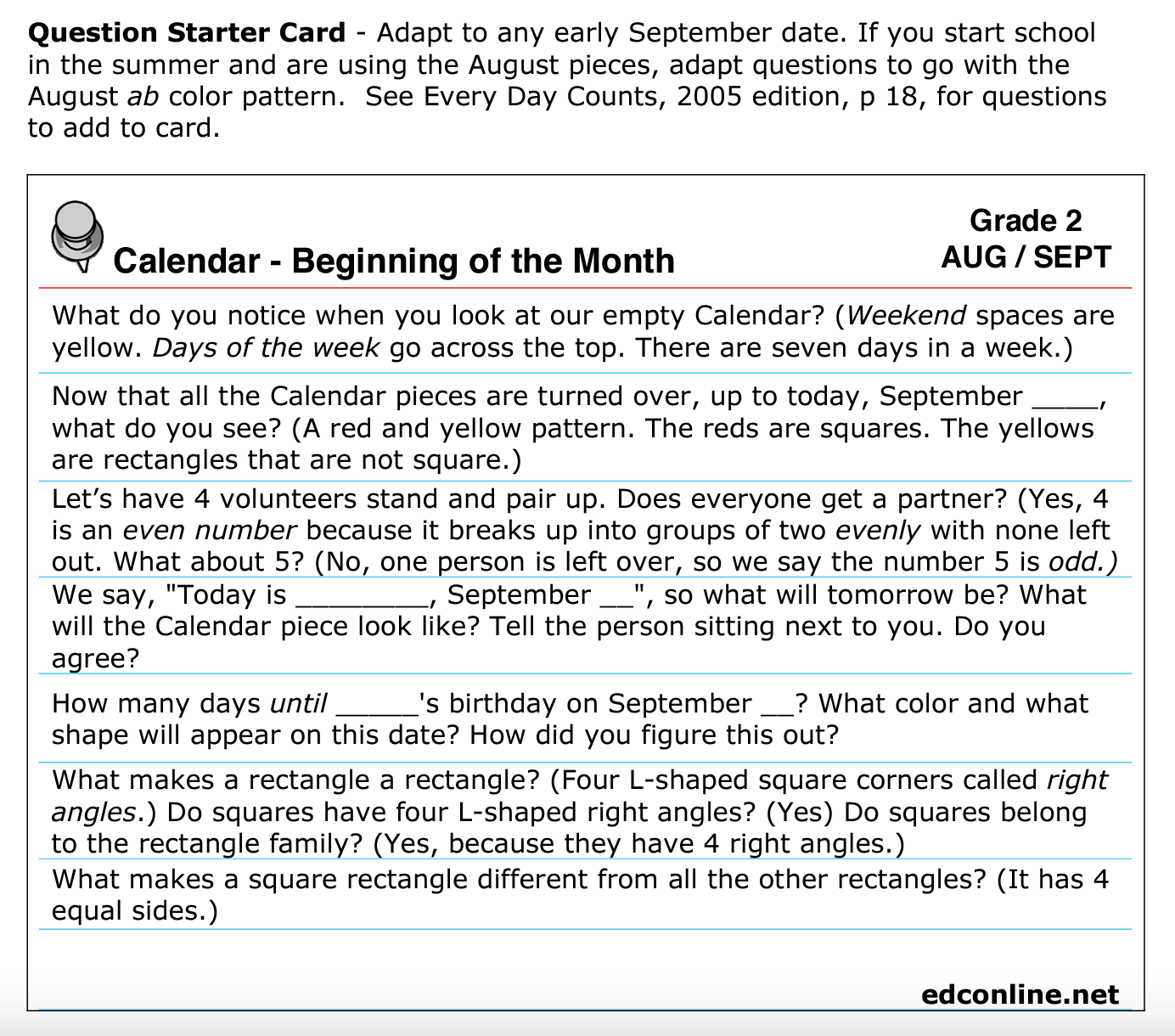Grade 2: EDC Counting Tape – Beginning of the School Year

Instructor Notes:
For materials preparations, click again on Samples and select Getting Started 2.
Read Every Day Counts Teacher’s Guide, Kanter and Gillespie, Great Source, 2005 or 2012 edition, p. 23-25.
Attach one 3″ square of colored paper showing the number of the day of school to the Counting Tape each day. (The squares and adding machine tape are in the EDC Kit.) In addition to counting the squares and reading the numerals, you may also want to model how to write each day’s new numeral. For example, we can write 12 as “1 group of ten (in red) and 2 extra ones (in black)”. By alternating the color of the squares with each group of ten, children will see that eleven is one group of ten and one more, and twelve is one group of ten and two more, and so on. Filling in the Days of School on the blank Hundred Chart from the EDC Kit provides a second way for children to see groups of ten and extra ones.
Grade 2: EDC Coin Counter – Day of School (Beginning of School Year)
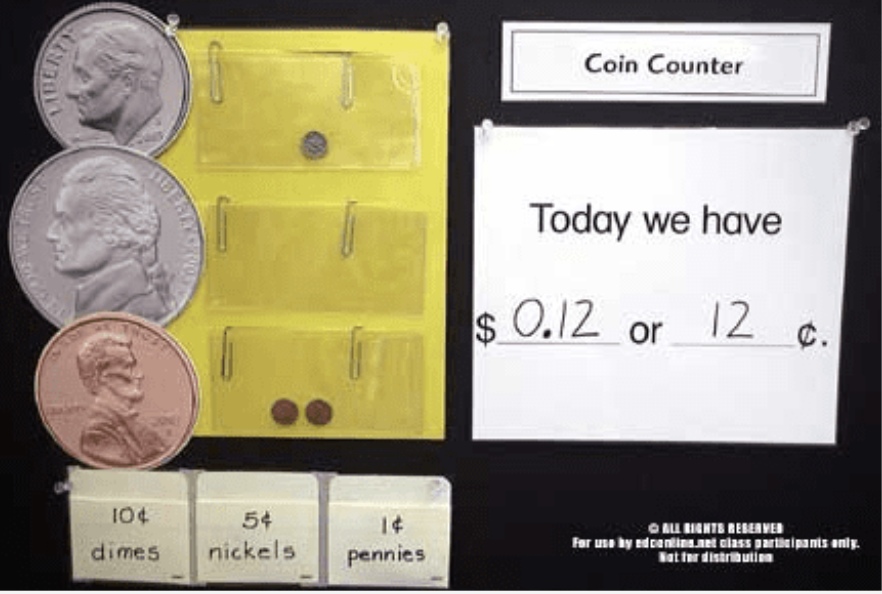
Instructor Notes:
For materials preparations, click again on Samples and select Getting Started 2.
Read Every Day Counts Teacher’s Guide, Kanter and Gillespie, Great Source, 2005 or 2012 edition, p. 25-26.
Each day of school add one penny to the Coin Counter, exchanging five pennies for a nickel every fifth day of school, and two nickels for a dime every tenth day of school. Small clear pockets and large demo coins are in the EDC Kit.
Grade 2: EDC Calendar – Beginning of September or 1st Month of School
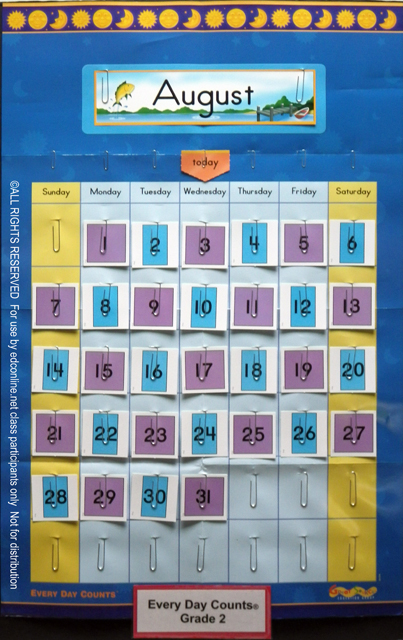
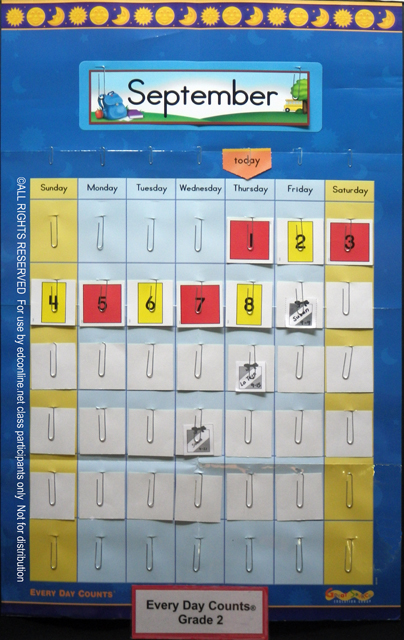
Instructor Notes:
For materials preparations, click again on Samples and select Getting Started 2.
Read Every Day Counts Teacher’s Guide, Kanter and Gillespie, Great Source, 2005 or 2012 edition, p. 18.
If you are on a year round schedule or begin school in August, you may want to use the August calendar pieces for your first month of school. If your school year starts in September use the September pieces. Both sets of pieces present an ab odd and even pattern with alternating square and non-square rectangles.
If your school year begins near the start of the month you may want to begin with an empty calendar. Have the class read the days of the week across the top in order. As you place the calendar piece for the first day of the month, have the class join you in saying, “September 1st was on Monday”. Do the same for each day that follows to the present date. Invite children to name the colors or the shapes, listening for a pattern.
Early in the month, talk about what makes a rectangle a rectangle, focusing on the critical attribute of 4 matching square corners or 4 matching “L-shaped” corners, called right angles. Since many children arrive in second grade mistakenly thinking rectangles must have two long sides and two short sides, you’ll need to come back to what really makes a rectangle a rectangle, focusing on the square corners, many times, until children can see that squares, with their four L-shaped square corners, belong to the rectangle family. You may want to refer to the squares as “square rectangles” or “special rectangles” with 4 equal sides to reinforce the idea that any 4-sided figure with 4 right angles is a rectangle regardless of the length its sides.
On several days during the month, invite a number of volunteers equal to the day’s date to pair up. Children can see that when the pairs come out evenly, with none left over, the date is an even number. If one child is left without a partner, it’s an odd number.
Grade 2: EDC Computations & Connections – September
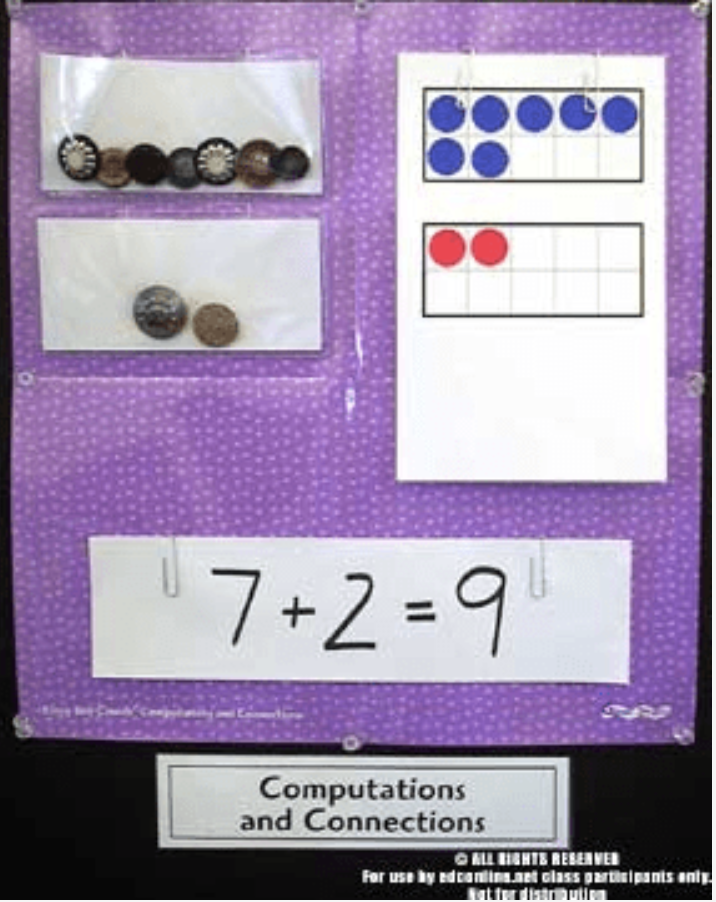
Instructor Notes:
For materials preparations, click again on Samples and select Getting Started 2.
Read Every Day Counts Teacher’s Guide, Kanter and Gillespie, Great Source, 2005 or 2012 edition, p. 20-21.
The focus of Computations and Connections in the first month is on the + and – 0, 1, and 2 facts. Begin with one counter on the first day the element is introduced, two counters on the next day it is used, and three on the next day, and so on for ten days.
Some teachers like to use the Double Dominoes (TR6) to make permanent cards for reviewing the combinations for five throughout the year.
The student helper must place the day’s counters into the two clear pockets so that one of the pockets receives zero, one, or two. The class is invited to look at the resulting combination and to offer adding or subtracting stories to go with it. Record a number sentence to go with one of the stories. Finally use a Double Ten Grid (TR 12) to make a picture record of the day’s combination. These pictures will be kept and used throughout the year to review fact families and to talk about number relationships.

